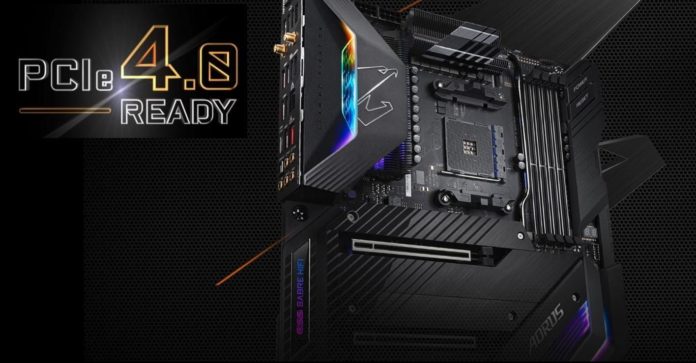We knew this day would be coming sooner or later. At AMD’s behest, manufacturers are pulling the plugs on PCI-E 4.0 support on pre-X570 motherboards. This particularly stings for me because I currently own a Gigabyte B450 DS3H. Fellow Gigabyte AM4+ owners: we’re in this boat together. If you want a taste of PCI-E 4.0 speeds without splurging on one of those expensive X570 boards, your only option now is to not upgrade your BIOS.

The big drawback here is that this chipset update also officially fixes the Ryzen launch issues with Destiny 2. What’s it going to be? Do more looting and shooting or run an absurdly fast SSD? But the real question we need to address here is why exactly PCI-E 4.0 support has been a contentious issue on pre-X570 boards and, moreover, why it’s only being addressed now.
PCI-E 4.0 isn’t a simple standard update. The move to the new version enables support for much greater bandwidth than was possible under PCI-E 3.0. PCI-E 4.0-compatible motherboards can support ultra-fast storage. The newest PCI-E 4.0-based SSDs run at ridiculously fast speeds in excess of 5000 MB/s. To put that into perspective, DDR2-667 RAM from the late 2000s (what you’d have run Crysis with), offered around the same amount of bandwidth. We’re now in a strange new era where storage is faster than RAM. Unfortunately (for owners of older boards, that is), the move to the new PCI-E standard entailed a re-engineering of the electrical pathways on the motherboard and wider spacing. This could only be readily accomplished on boards with 6-layered PCBs. Older boards technically could support PCI-4.0 devices but the closer spacing of circuits in PCI-E 3.0 boards would introduce signal integrity issues. This would cause error checking to kick in more often, leading to lower overall throughput: while PCI-E 4.0 devices could operate, and while they’d be meaningfully faster than devices on PCI-E 3.0, they wouldn’t be working at full performance. Moreover, frequent error checking also introduces issues with data integrity.

AMD didn’t really want to get in this mess. And, besides, it makes sense from a marketing standard for only their new hardware to benefit from the new PCI-E standard, so they’ve been pushing OEMs to disable the partial support for PCI-E 4.0 currently featured on many of their boards. Gigabyte seems to have caved early but we’ll probably be hearing more disappointing reports like this soon.
Further Reading:


